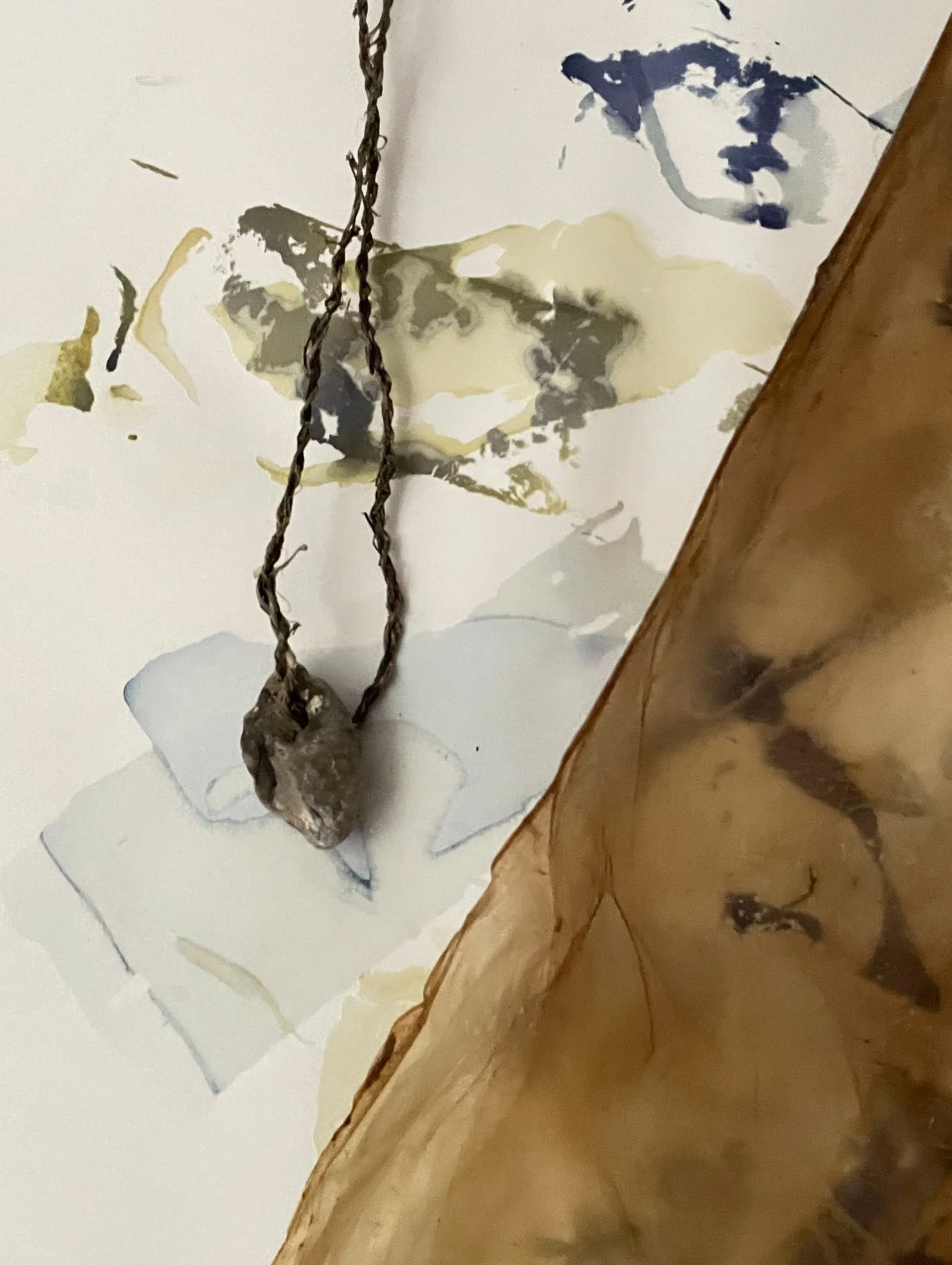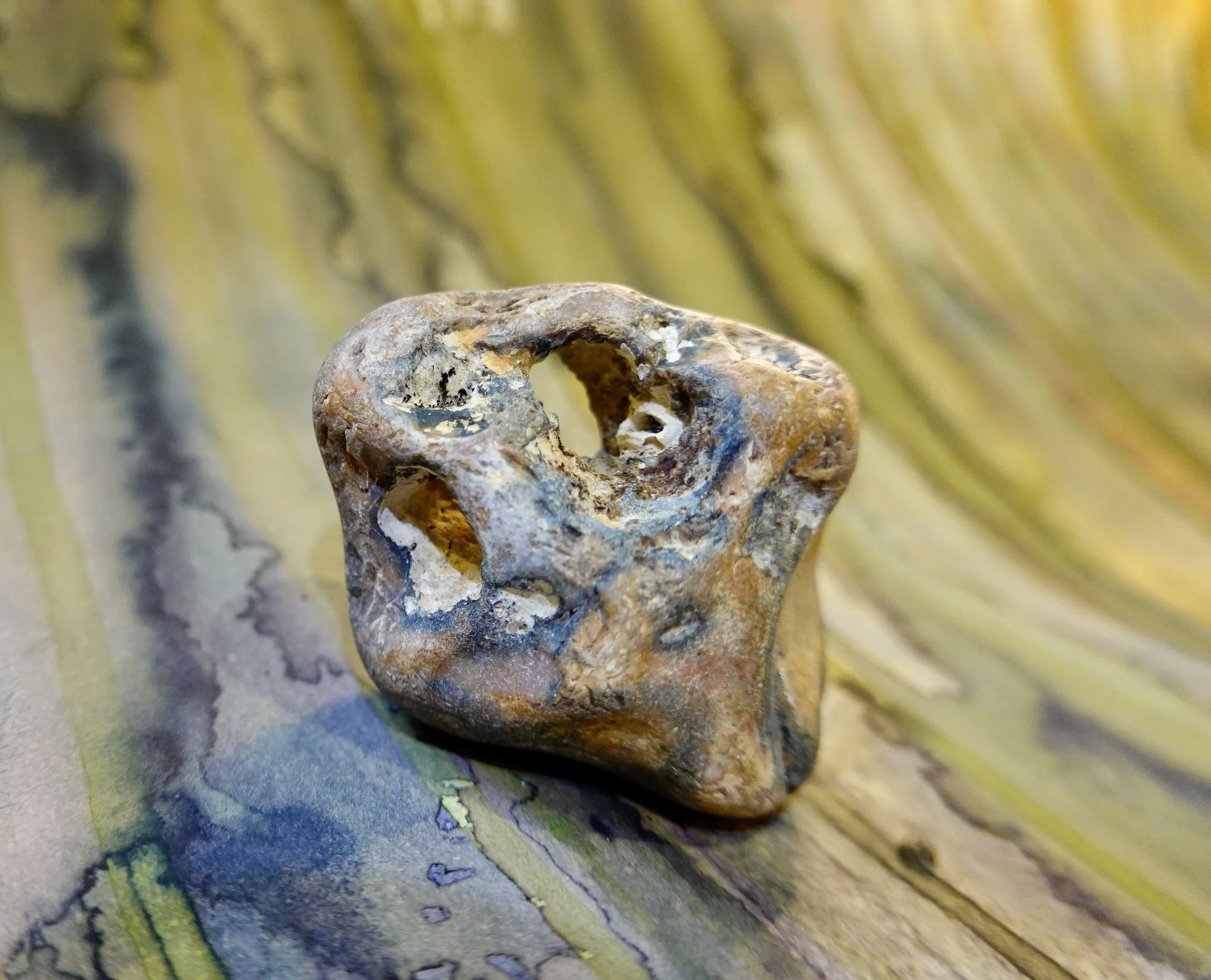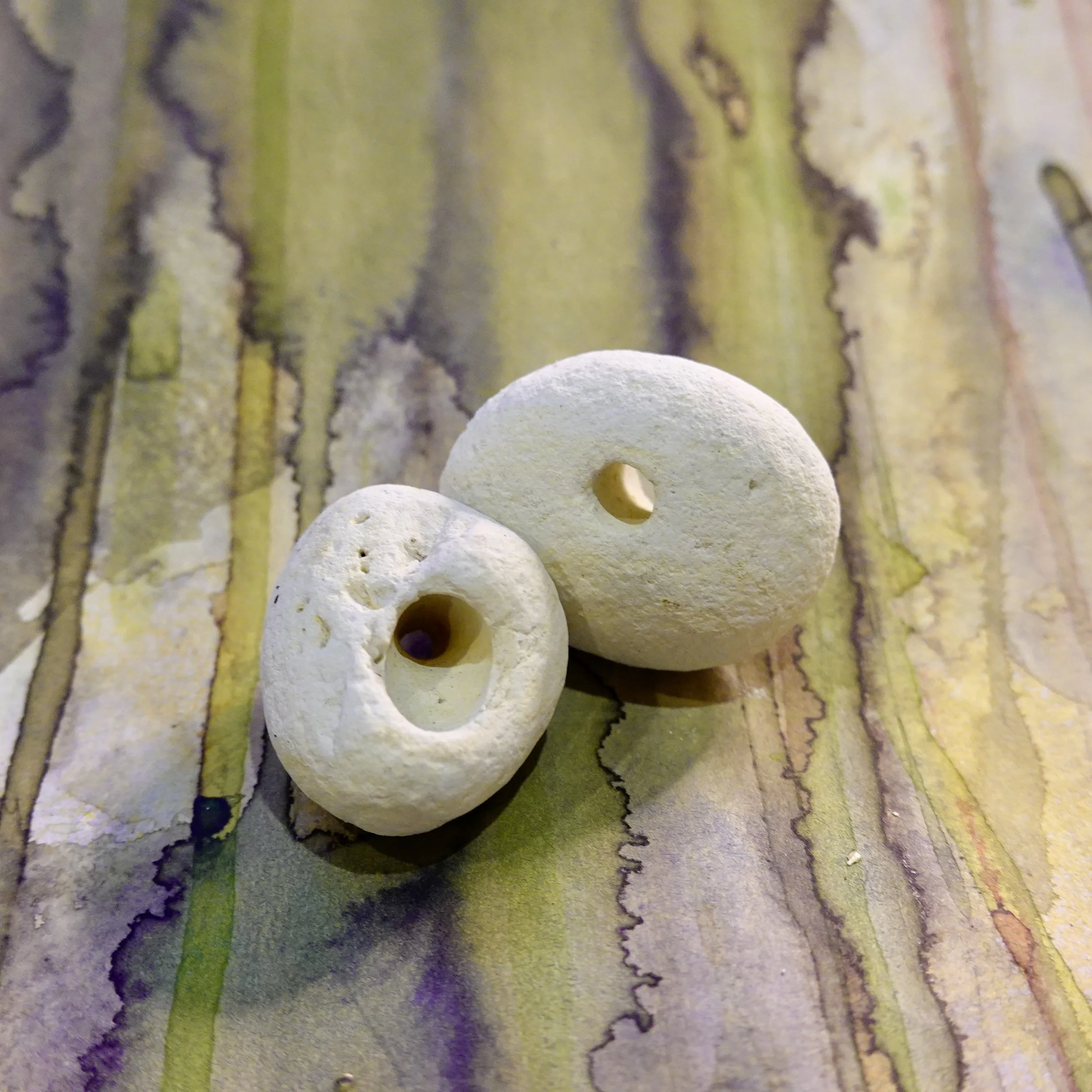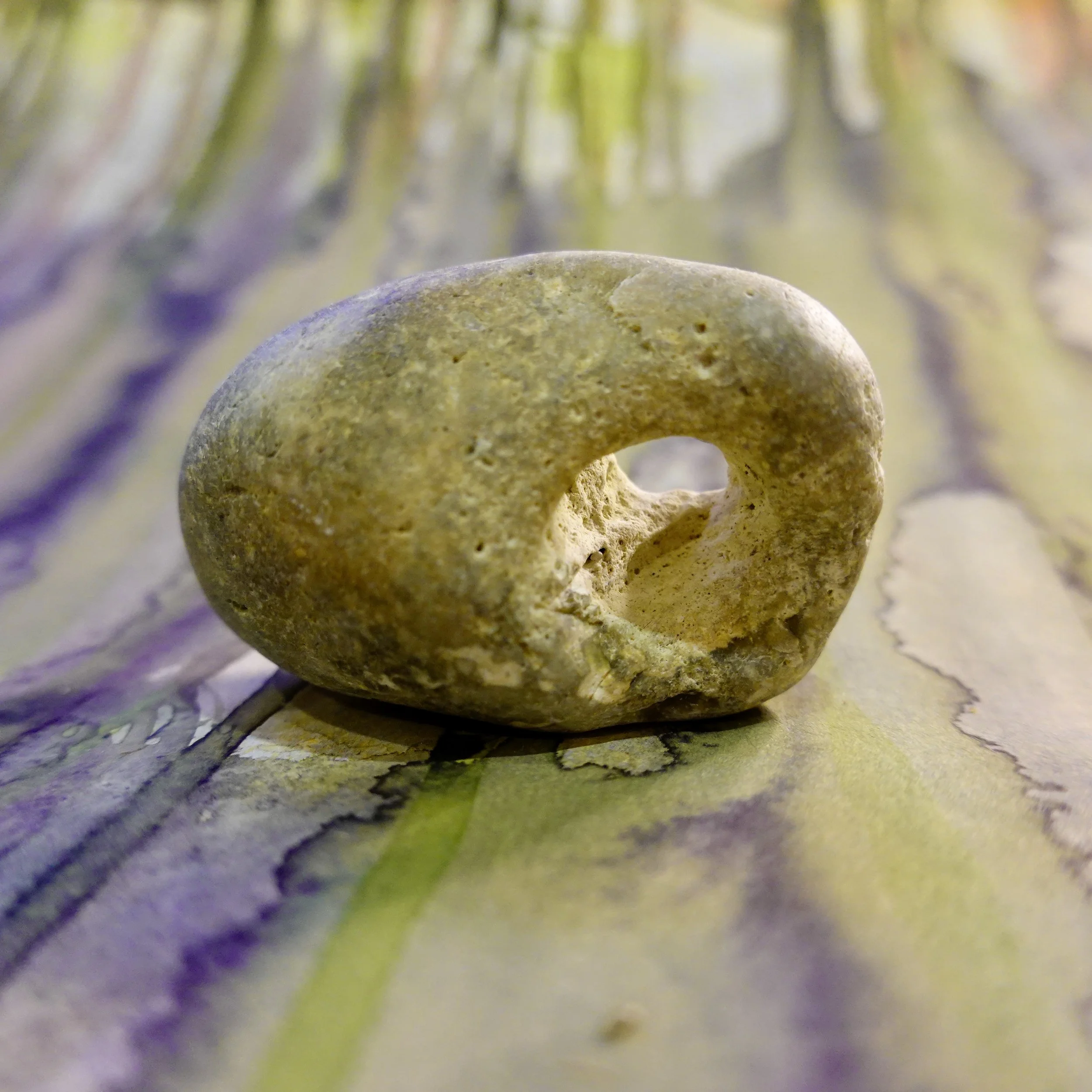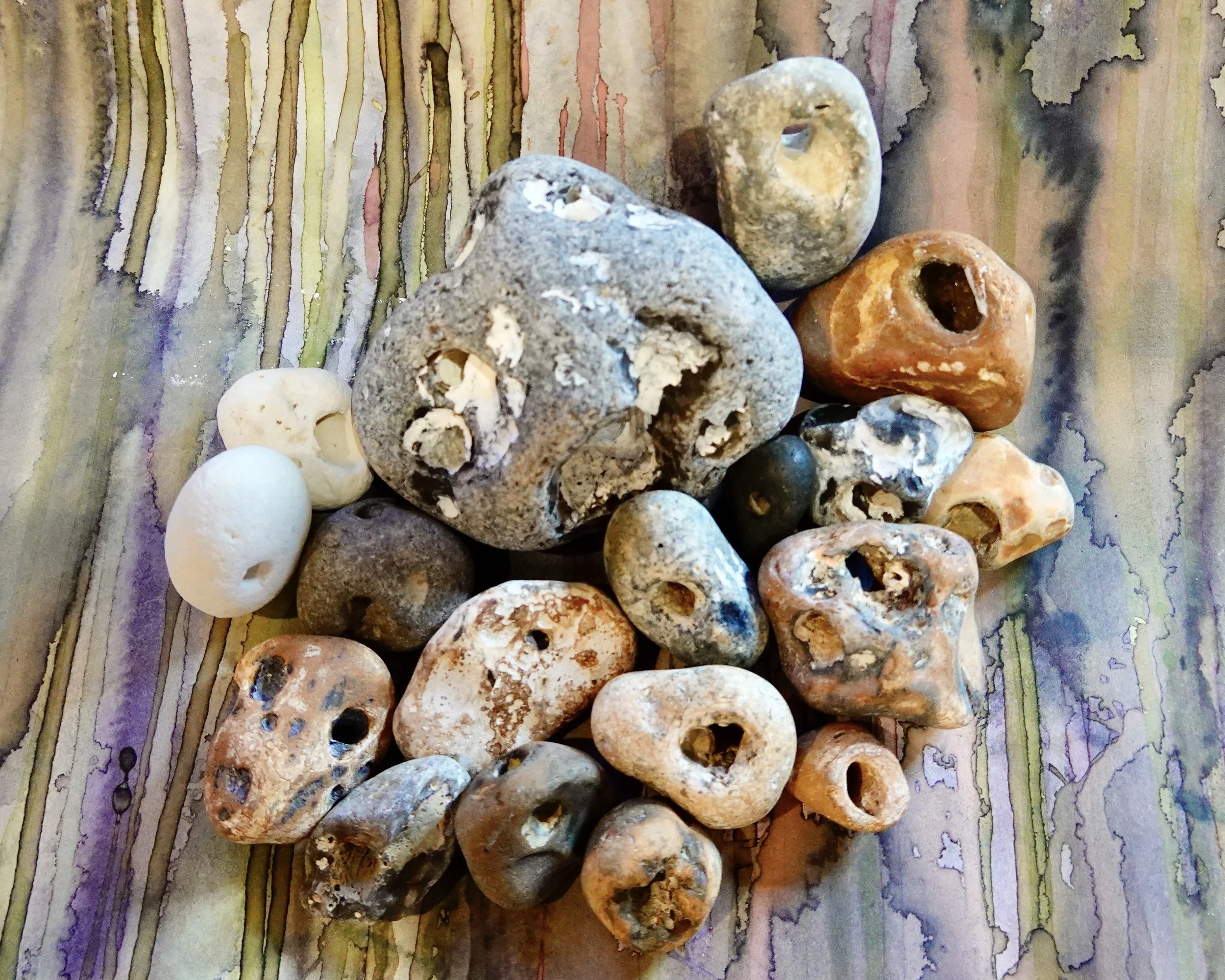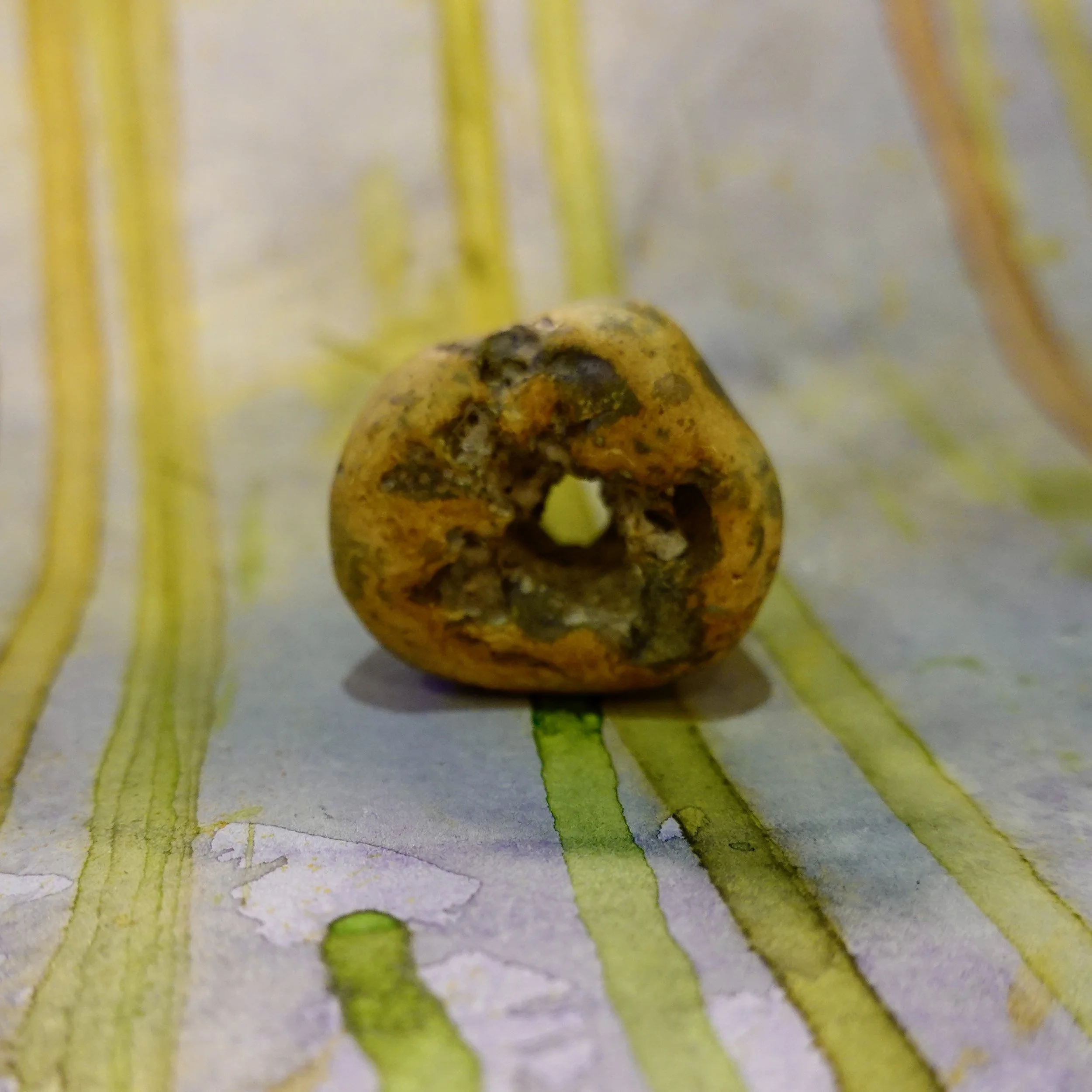The Hag Stone-Adder Stone
Hag stones, also known as adder stones, witch stones, holey stones, or serpent's eggs, are stones that contain naturally occurring holes through them. They have a rich history and folklore associated with them, often considered to possess magical or protective properties. They were significant objects or talismans of their time. These stones were objects I had been collecting for a few years before knowing the history behind them. Once I found out there significance this spiked my interest even more.
Physical Characteristics
Formation: Hag stones are usually created through the natural process of water erosion, where the action of water, sand, and the friction of small pebbles erodes a hole through the stone. The most common types of stones that become hag stones are flint, sandstone, and limestone, but many others have been found.
Appearance: They vary in size, from small enough to be carried in a pocket to large enough to be used as a doorway stone. The hole can be of various shapes and sizes, but it is the naturally occurring hole that defines a hag stone, having been eroded over a long period.
Folklore and Mythology
Protection Against Evil: In various cultures, hag stones are believed to protect against malevolent entities, such as witches, spirits, and curses. They were often hung over doorways, windows, or around the neck to ward off evil influences. Some Witches, or medicine women would also prescribe these for protection for people.
Visionary Tool: In some traditions, looking through the hole of a hag stone was believed to allow a person to see into the spirit world, see fairies, or reveal hidden truths.
Healing Powers: Some folklore suggests that hag stones could be used to cure ailments, especially those caused by witchcraft or the evil eye. They were sometimes used in rituals to promote healing or protect livestock.
Connection to Serpents: In certain myths, particularly in Europe, hag stones are associated with serpents or snakes. The belief was that these stones were formed when snakes knotted together and their saliva, in combination with moonlight, bore a hole through the stone.
Cultural Significance
Britain: Hag stones are particularly prevalent in the folklore of the British Isles. They were often kept as protective amulets or used in agricultural practices to ensure the health of crops and livestock.
Norse Mythology: In Norse mythology, hag stones were linked to the goddess Frigg, who used them to protect against evil.
Wicca and Modern Paganism: Today, hag stones are often used in modern witchcraft and pagan practices. They are used in spells for protection, insight, and even as a means of connecting with nature spirits.
Uses and Modern Practices
Amulets and Talismans: Many people today carry hag stones as a protective charm, either by wearing them as jewellery or keeping them in their homes or vehicles.
Meditation and Rituals: Some practitioners use hag stones in meditation to gain insight or connect with the spiritual realm. They are also employed in rituals to invoke protection or to bless a space.
Decorative Items: Due to their unique appearance, hag stones are sometimes used in art or as decorative pieces in gardens and homes.
Uses and Modern Practices
Amulets and Talismans: Many people today carry hag stones as a protective charm, either by wearing them as jewellery or keeping them in their homes or vehicles.
Meditation and Rituals: Some practitioners use hag stones in meditation to gain insight or connect with the spiritual realm. They are also employed in rituals to invoke protection or to bless a space.
Finding and Collecting Hag Stones
Locations: Hag stones are often found near bodies of water, particularly along riverbanks, coastlines, or streams where water erosion is likely to occur. These are rare objects to find these days, but if you do find one you tend to find many in the same area as if they are drawn to specific places.
Collecting: While they can be collected as natural curiosities, it’s essential to respect the environment. In some places, it might be illegal to remove stones from protected areas.
Hag stones are objects steeped in history and mythology. Their unique formation and the myriads of beliefs associated with them make them intriguing both as natural phenomena and as cultural artifacts. Whether used for protection, in rituals, or simply appreciated for their beauty, hag stones continue to captivate people across different cultures and spiritual practices.
Personal uses,
Hag stones are fascinating objects steeped in history and mythology. Their unique formation and the myriad of beliefs associated with them make them intriguing both as natural phenomena and as cultural artifacts. Whether used for protection, in rituals, or simply appreciated for their beauty, hag stones continue to captivate people across different cultures and spiritual practices. I use them fro protection and they are used in my cleansing rituals along with my home made foraged smudge sticks.
The information I provided about hag stones comes from a variety of sources, including historical folklore, modern witchcraft practices, and cultural studies. Below is a breakdown of where this information typically originates and some references to further explore these topics:
Sources and References
Folklore and Mythology:
Hag stones are deeply rooted in European folklore, particularly in the British Isles. Books on folklore, such as "The Encyclopedia of Superstitions" by Edwin and Mona A. Radford, often discuss the protective and magical properties attributed to hag stones. The association with serpents and witches can be found in texts like "The Penguin Guide to the Superstitions of Britain and Ireland" by Steve Roud, which explores the various superstitions linked to everyday objects, including hag stones.
Cultural and Historical Significance:
Historical and cultural studies, such as those by the Folklore Society, often document regional variations and uses of hag stones. For example, hag stones were used in farming practices in rural Britain, this information can be found in regional folklore collections. Academic articles on Norse mythology often mention the use of protective objects, like hag stones, in Viking culture. Resources like "Norse Mythology: A Guide to the Gods, Heroes, Rituals, and Beliefs" by John Lindow provide insights into such beliefs.
Modern Paganism and Witchcraft:
In contemporary witchcraft and Wicca, hag stones are often discussed in books like "The Encyclopedia of Witches, Witchcraft, and Wicca" by Rosemary Ellen Guiley, which details how such objects are used in modern spiritual practices. Websites dedicated to modern paganism, such as those maintained by practitioners or scholars of Wicca, often contain articles and blog posts on using hag stones in rituals and as amulets. Examples include "Llewellyn's Complete Book of Correspondences" by Sandra Kynes.
Physical and Geological Information:
The geological formation of hag stones through natural erosion processes can be found in geological texts, articles, and resources on coastal geology. For instance, studies on flint formations often mention how water erosion can create holes in stones. Educational websites and museums that focus on natural history or geology, like the Natural History Museum's online resources, provide information on how stones like hag stones are naturally formed.
This information is merely a synthesis of traditional folklore, cultural studies, modern spiritual practices, and geological science. The aspect of hag stones—whether their formation, cultural significance, or use in contemporary practices, has been documented in various academic and popular resources. To gain deeper insights, one can explore books on folklore, mythology, witchcraft, and scientific texts on geology.

